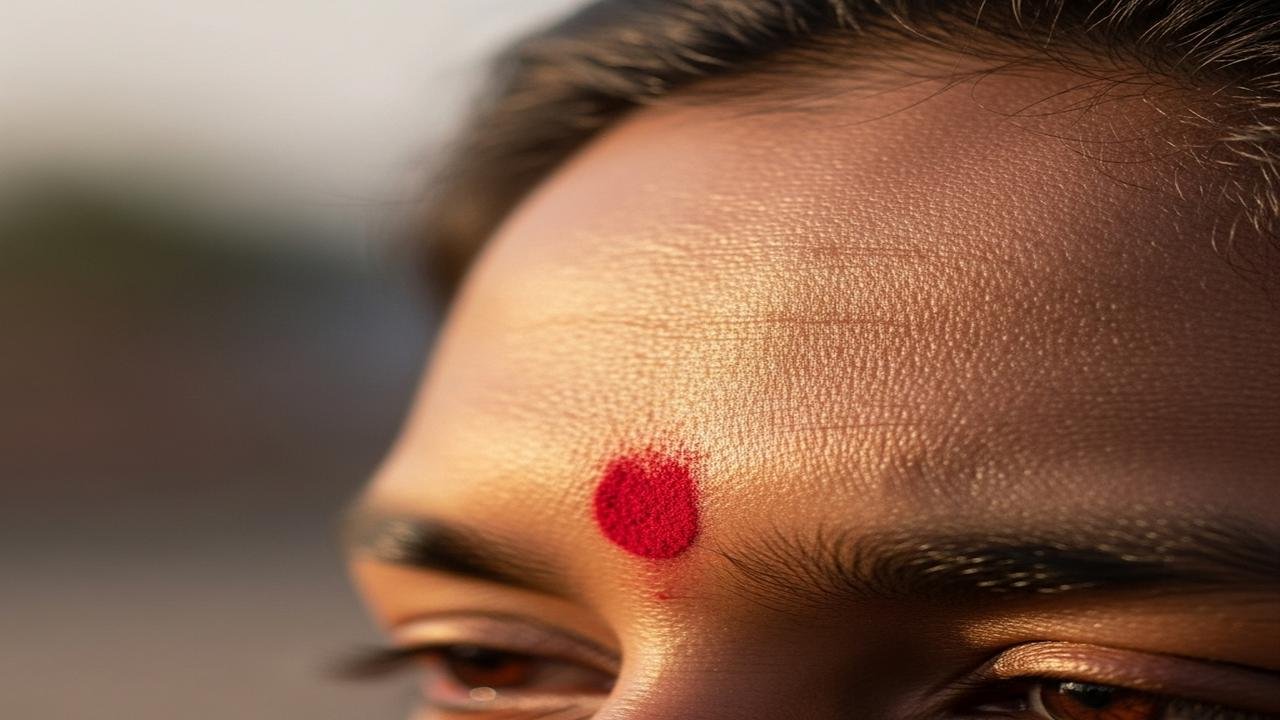Why This Tiny Tilak on the Forehead Changes Everything

The Secret Behind Applying Tilak on the Forehead
When I was a child, my grandmother would wake before sunrise and sit by the small shrine, her fingers stained with sandalwood paste. She would close her eyes, whisper a name, and gently press a small dot on my forehead. That touch felt like a promise—of protection, of love, of a path I belonged to. That simple act was my first lesson in the secret of the tilak.
Tilak is more than a mark. It is a silent prayer written on skin. In temples and homes across India, this mark connects the visible world with the inner. It points to the space between the eyebrows, the place many traditions call the ajna chakra—our inner eye, the seat of intuition. Placing a tilak there is a way of remembering that we carry light within us.
Historically, the tilak has roots in Vedic rituals and later grew into many forms under regional and devotional traditions. Kings marked their foreheads to show sovereignty. Devotees wore different shapes to show devotion to a particular deity—vertical lines for Vishnu worshippers, three horizontal ash lines for Shiva devotees, and a red dot for the auspicious feminine energy. Over centuries, the tilak became a symbol of identity, belief, and belonging.
Materials used for tilak carry their own meanings. Kumkum or vermilion speaks of auspiciousness and the creative power of Shakti. Sandalwood paste cools the mind and expresses devotion. Vibhuti, sacred ash, reminds us of impermanence and the need for spiritual focus. Even turmeric, rich and golden, is used for purification and health. Each substance is a language—gentle and symbolic.
There are simple, everyday rituals tied to the tilak. Mothers bless children with a dab before school; priests mark devotees after a temple prayer; lovers leave a tilak as a tender sign. During festivals, the forehead becomes a canvas of culture—bright kumkum on Diwali, ash-smudged foreheads on Maha Shivaratri, and long sandalwood streaks on hot summer mornings. These practices weave personal stories into the larger fabric of community life.
Applying tilak is an act of mindfulness. It asks for a quiet moment: wash the forehead, take a breath, remember the reason for the mark. When done with devotion, a tilak becomes a reminder to return home inwardly. It centers the mind, calms the senses, and anchors intention. For many spiritual seekers, that small dot is a cue to pause and breathe, to remember who they are beyond the rush of the day.
In modern times, the tilak continues to evolve. It is both tradition and personal expression. Young people may use it as cultural pride, office-goers as a discreet blessing before a meeting, or yoga practitioners as a focus for meditation. At weddings and rites of passage, the tilak still seals vows and acknowledges transitions, linking personal milestones with sacred timelessness.
More than a religious label, the tilak teaches humility. It reminds us that every face carries a story, every mark a blessing. When a teacher or elder places a tilak on your forehead, it is an offering of guidance and protection. When you apply it to yourself, it is a vow—small, visible, powerful.
Conclusion
Next time you see or receive a tilak, pause and feel its deeper meaning. It is not merely color on skin but a bridge—between heart and hearth, between memory and prayer. Let that tiny mark help you remember your inner light and walk your day with grace.
